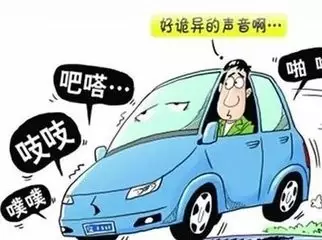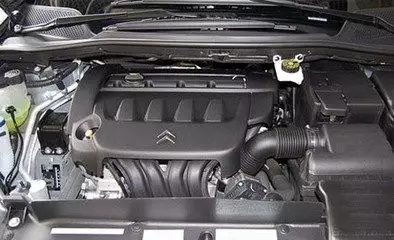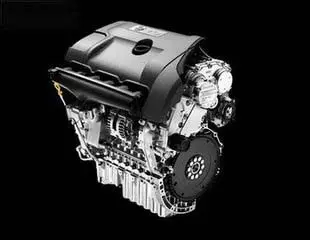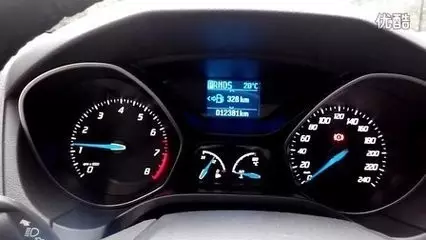Knock cylinder
Knocking cylinder is short for the failure phenomenon of piston knocking cylinder wall. This kind of failure is a malignant failure of the engine, which mostly occurs when the engine is seriously worn out or the engine is not repaired at the beginning of overhaul.
Knock cylinder fault phenomena
When the knocking cylinder fails, the main feature is that the cylinder emits a kind of crisp and rhythmic metal knocking sound, which varies with the temperature. The sound of piston knocking cylinder is mainly manifested as: when the working temperature of the engine is low, the sound is obvious, especially when idle, the sound is clearer. When the temperature rises, the noise weakens or disappears.
Main causes of cylinder knock failure
1. The gap between piston and cylinder is large due to improper repair, or the gap is too large due to serious cylinder wear. When the engine is low temperature, the piston clearance is larger, and the knocking cylinder abnormal sound is serious. After the engine temperature rises, the piston expands, which makes the piston matching clearance smaller, and the knocking cylinder abnormal sound decreases or disappears accordingly.

2. The direction of the piston is reversed or the piston is deformed, which damages the normal clearance between the piston and the cylinder, resulting in the sound of the piston knocking on the cylinder. For more car information, please add wechat public number: qxzydzb
3. Poor lubrication conditions, low oil pressure or low oil viscosity, poor splash lubrication on the cylinder wall, normal lubricating oil film cannot be formed between the piston and the cylinder wall, and the piston and the cylinder directly collide and knock the cylinder.
4. The connecting rod is bent or twisted. The assembly of piston rod groups makes the skew of the piston in the cylinder exceed the permitted range, which not only makes the sealing worse and the lubrication condition worse, but also causes abnormal wear and tear of the cylinder, so as to make the piston and the cylinder wall knock and sound.
5. The lubricating oil channel is blocked, and normal flood lubrication cannot be formed; Connecting rod bearing shell or piston pin are too tight, causing impact and sound from the cylinder wall during piston movement.
6. When the carbon deposit in the combustion chamber is too large, the engine pressure ratio of diesel oil will increase, and the gas pressure and temperature will be too high. The aerosol diesel injected into the cylinder will encounter the gas of high temperature and high pressure, which will cause the so-called knock. When knocking, the flame propagates outward at a very high speed. Even when the gas is too late to expand, the temperature and pressure rise sharply, forming a pressure wave and advancing forward at the speed of sound. When this pressure wave hits the cylinder wall, it makes a sharp knocking sound.
7. Inflammable mixture rate of burning is too fast, causing the cylinder pressure to be too high, and the piston skirt hits the cylinder wall, causing abnormal cylinder knocking.
Diagnosis and elimination of knocking cylinder fault
1. Fix the speed of diesel engine at the loudest position of tapping, and take cylinder-by-Cylinder Oil cut-off method for testing. Remove a cylinder high-pressure oil pipe. If the sound significantly weakens or disappears when the cylinder is tested, it is proved that the piston of the cylinder knocks on the cylinder wall.
2. When the diesel engine is idling, the abnormal sound of the piston knocking cylinder is obvious and clear. As the water temperature of the diesel engine rises or the rotating speed is above the medium speed, the sound weakens or disappears.
3. Remove the fuel injector, inject a small amount of oil into the cylinder from its mounting hole point, and use starter to drive the crankshaft of the diesel engine to rotate several turns to fill the piston and cylinder wall with lubricating oil film, and then start the diesel engine. If the sound is obviously weakened or disappeared at the moment after startup. However, with the loss or ablation of oil film, the sound will appear soon, indicating that the abnormal sound of knocking on the cylinder occurs in the cylinder.

4. Draw out piston rod groups, and use outer diameter micrometer and cylinder gauge to measure whether the matching clearance between piston and cylinder and the matching clearance between piston pin and piston pin holes meet the use requirements.
5. Check the bending and twisting deformation of connecting rod. If the deformation exceeds the limit, it should be corrected or replaced by cold pressure; Check the connecting rod small head copper sleeve, if the wear exceeds the limit, it should be replaced by copper sleeve; Connecting rod and connecting rod bolts should be subject to magnetic flaw detection, connecting rod has any form of crack, all must be replaced.
6. When assembling, check the piston installation direction, especially the diesel engine with piston pin offset design, in order to reduce the chance of the engine piston knocking on the cylinder. Once the direction is reversed, it will inevitably lead to or aggravate the abnormal sound of the knocking cylinder of the engine.
Scuffing of cylinder bore
Scuffing of cylinder bore refers to the obvious longitudinal mechanical scratches and scratches on the inner wall of the cylinder within the movement range of the piston ring, and the melting wear occurs seriously, causing the engine to start difficult or self-flameout failure. Scuffing of cylinder bore is a major accident of the engine. The root cause of scuffing of cylinder bore is that it is difficult to form oil film between the inner wall of the cylinder, piston ring and piston, thus causing poor lubrication and even dry friction.
Scuffing of cylinder bore fault phenomena
When the cylinder is pulled and groove marks appear, the engine will have a sound similar to knocking when running, and the sound will change with the engine speed; Due to the appearance of groove marks on the cylinder wall, the cylinder sealing condition will deteriorate, and the oil will run into the combustion chamber to burn, the consumption of engine oil increases, and the engine generates blue smoke.
Main causes of scuffing of cylinder bore failures
Reasons for Piston Group
1. The clearance of piston ring is too small. If the opening clearance, side clearance or back clearance of the piston ring is too small, the piston ring will be heated and swollen when the engine is working, and it will be pressed tightly with the cylinder wall, or the piston ring will be broken, so it is easy to pull out the groove on the cylinder wall.

2. Piston pin out. Because the piston pin circlip is not installed or falls off or broken, the piston pin runs out in motion, and it is easy to strain the inner wall of the cylinder, causing the cylinder to blow gas to the crankcase.
3. The clearance of the piston cylinder is too small or too large. If the material of the piston is poor, the manufacturing size error is too large, or the piston is deformed after assembling piston pin, the matching gap between the piston and the cylinder is too small, and the piston is stuck after being heated and expanded, thus damaging the cylinder wall.
4. Severe Carbon deposit on piston rings. Excessive carbon deposit causes the piston ring to bond or bite to death in the Annular Groove. At the same time, carbon deposit is a kind of hard abrasive, which will grind into longitudinal groove on the cylinder wall.
5. The piston is seriously partial to the cylinder. Due to the bending and twisting deformation of the connecting rod, the parallelism and coaxiality deviation of the connecting rod shaft neck, main shaft neck and piston pin seat are too large, causing the piston to be obviously deflected from the cylinder, which will accelerate the piston ring, the wear of piston and cylinder wall damages the formation of oil film.
A cylinder sleeve reasons
1. The roundness and cylindricity tolerance of a cylinder sleeve is beyond the allowable range, which greatly reduces the sealing performance of the piston and cylinder liner. The high temperature gas in the cylinder goes down, damaging the oil film between the piston and the cylinder wall, this leads to scuffing of cylinder bore.
2. A cylinder sleeve deformation occurs during assembly. For example, if the bulge of the upper end surface of the cylinder liner is too large, the cylinder liner will be pressed into deformation after installation of cylinder cover; If the cylinder liner resistance hydrosphere is too thick, the cylinder liner will be deformed after being pressed into the body, which will easily cause scuffing of cylinder bore.
Reasons for use
1. The air filter is not sealed, which makes the filtering effect worse. Dust, sand and other impurities in the air are sucked into the cylinder to form abrasive wear. The test shows that if several grams of dust are sucked in every day, the wear amount of a cylinder sleeve will increase by more than 10 times.

2. Poor running-in. There are many microscopic irregularities on the surface of a cylinder sleeve, piston, piston ring and other parts of the engine after new machine or overhaul, and the lubricating oil film is difficult to form. If it is put into heavy load operation immediately without running-in, it will easily cause accidents such as scuffing of cylinder bore.
3. Often start at low temperature. When the engine starts at low temperature, the lubricating oil has high viscosity and poor fluidity, which makes it difficult to form effective oil film on the inner wall of the cylinder. According to the test of the research department, when the diesel engine works under the cooling water temperature below 30℃, the wear of a cylinder sleeve and other parts is 5~7 times that of normal water temperature.
4. Engine overheating. When the cooling system is poorly maintained or overloaded, the high machine temperature not only reduces the mechanical strength of the parts, but also prevents the lubricating oil film on the inner wall of the cylinder from forming. After the piston and other parts are heated and expanded, it is easy to get stuck in the cylinder liner. The consequence is that the piston is partially melted and the inner wall of the cylinder liner is pulled out, forcing the engine to shut down. In actual use, scuffing of cylinder bore is often the result of several factors. For example, the engine cooler without running-in is put into full-load operation immediately after starting, and scuffing of cylinder bore accidents are easy to occur at this time.
Measures to prevent scuffing of cylinder bore
1. For the new machine and the engine after overhaul, you must first run in, that is, under the condition of maintaining good lubrication, according to the principle of rotating speed from low to high and load from small to large, carefully follow the running-in procedures before it can be put into formal load operation.
2. According to the instructions, correctly select the clearance between the piston skirt and a cylinder sleeve, the opening clearance and edge clearance of the piston ring. In addition, in the repair, the piston cylinder should be controlled, and the dimensional accuracy of a cylinder sleeve should be ensured at the same time.
3. Keep the normal temperature of cooling water from 70℃ to 95℃ to avoid overheating of the engine. Warm-up measures should be taken before starting in winter.
4. Operate and use the engine reasonably, do not overload the operation, do not blow the throttle randomly, and do not start with water shortage.
5. Strengthen the maintenance of the air filter and prevent dust from being sucked into the cylinder.
6. Maintain the lubrication system to prevent mechanical impurities and carbon deposits from mixing into the engine oil and aggravating a cylinder sleeve wear.
7. Check the oil level of engine oil timely and add it when oil is short.
Gasket damaged
Gasket damage is generally manifested as air leakage and water leakage. This fault is also a malignant fault of the engine. It should be handled in time to avoid greater damage to the engine.
Gasket damage
When the gasket is damaged, it will cause the engine power drop, water leakage, air leakage and other phenomena to occur. If the fault continues to develop, it will lead to the result that the parts such as cylinder head melting will be damaged until they are scrapped. Gasket air leakage faults mostly occur at the interval between the two cylinders. When gasket of the cylinders are damaged and air leakage occurs, some cylinders of the engine will not work (commonly known as "cylinder shortage"), sending out "sudden, abnormal sound of sudden", shaking of cylinder body, weak driving and other phenomena, sometimes there will be shooting, tempering and other phenomena; If the gasket is damaged and leaks, the coolant will flow into the cylinder, it damages the working and lubrication of the cylinder, and flows into the oil pan, causing the oil to emulsion and affecting the lubrication performance of the engine.
Cause of gasket damage
1. Overheating or knocking occurs when the engine is not working properly, resulting in gasket ablation damage.
2. Gasket the assembly is uneven or the Assembly direction is wrong, resulting in gasket damage.

3. When the cylinder head is installed, it is not assembled according to the specified sequence and torque, resulting in gasket unsealing.
4. When gasket is installed, it is mixed with dirt between cylinder head and cylinder body, which makes gasket seal lax and damaged.
5. The quality of gasket is poor, and the seal is not tight, resulting in damage.
Gasket diagnostic methods for damage
If the engine has abnormal sound of "sudden, sudden" and weak driving, check whether the oil circuit and Circuit of the engine are normal first. When it is determined that the oil circuit and circuit are normal, gasket damage fault can be suspected, and the following steps can be followed for detection:
First of all, determine the cylinder with "sudden and sudden" abnormal sound generated by the engine. Gasket damage causes the adjacent cylinder to fail. If it is determined that the adjacent cylinder is not working, the cylinder pressure of the non-working cylinder can be measured by cylinder pressure gauge. If the pressure of the adjacent two cylinders is relatively low and close, it can be determined that the gasket is washed out or the cylinder head is deformed and damaged.
If oil leakage is found on the joint surface of the engine, the amount of oil increases, the oil contains moisture, and the coolant in the radiator contains oil flowers or bubbles, check whether there is water leakage or oil leakage at the joint of the cylinder head and the gasket, if any, gasket damage will cause leakage.